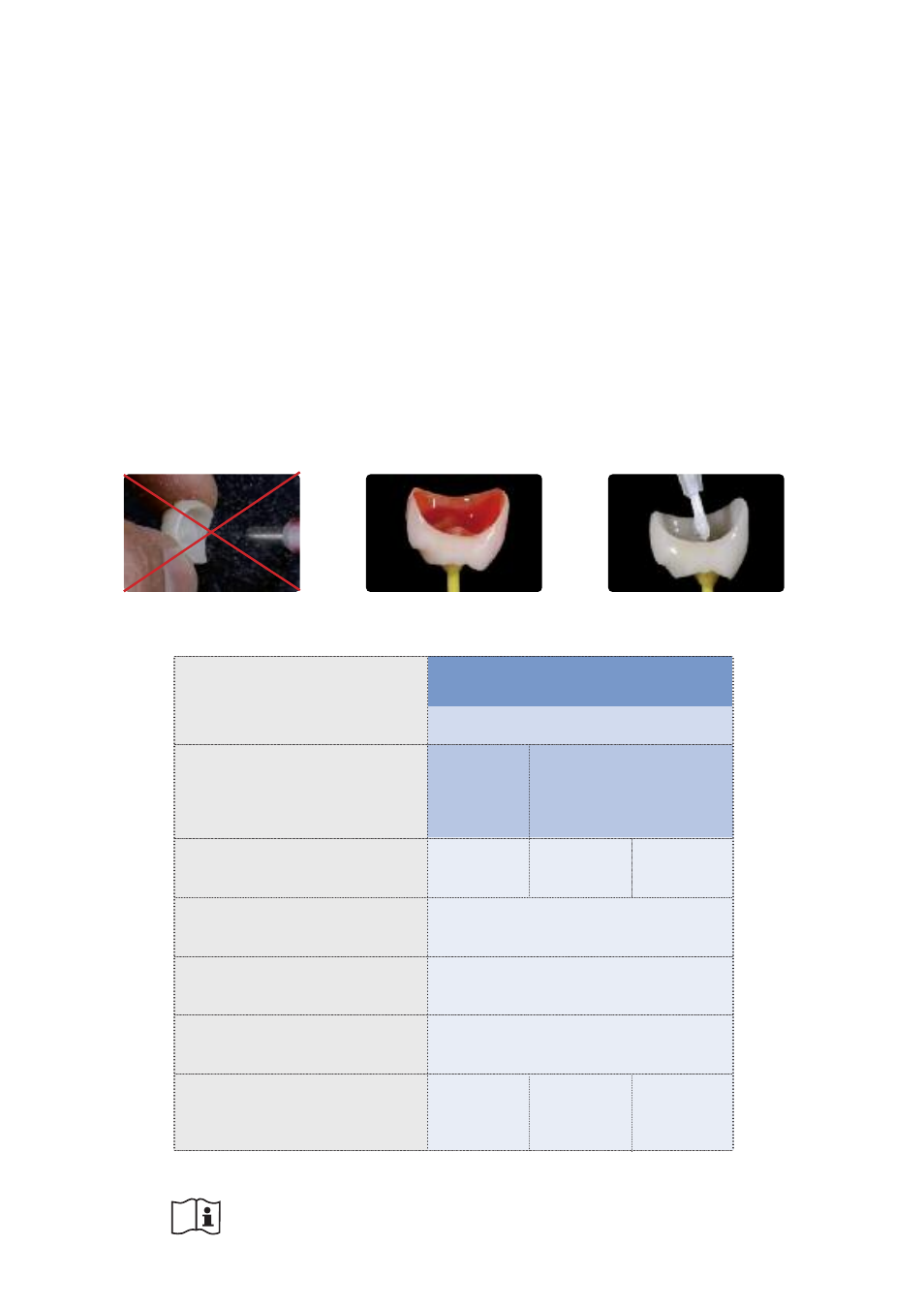Preparing for cementation – Ivoclar Vivadent IPS e.max CAD Labside User Manual
Page 54

54
Do not blast IPS e.max CAD restorations
Etch for 20 s with IPS Ceramic Etching Gel
Let Monobond Plus react for 60 seconds
and blow dry
* Conventional cementation is done without conditioning
The range of products on offer may vary from country to country
Please observe the corresponding Instructions for Use.
Material
Indication
Cementation method
Blasting
Etching
Conditioning / silanization
Cementation system
self-adhesive /
conventional *
Variolink
®
II,
Multilink
®
Automix
SpeedCEM
Vivaglass
®
CEM
IPS e.max CAD
Veneers,
inlays, onlays,
partial crowns
Anterior and posterior crowns
adhesive
adhesive
20 sec with IPS Ceramic Etching Gel
60 sec with Monobond
®
Plus
––
Variolink
®
Veneer,
Variolink
®
II,
Multilink
®
Automix
Lithium disilicate glass-ceramic
Preparing for Cementation
Conditioning of the restoration and preparation depends on the cementation method used. The following paragraphs
describe the basic working steps to prepare for cementation.
a. Conditioning of the restoration
Conditioning of the ceramic surface in preparation for cementation is decisive for generating a sound bond between the
cementation material and the all-ceramic restoration. The following steps must be observed:
– Do not blast IPS e.max CAD with Al
2
O
3
or glass polishing beads before incorporation.
– Ideally, conduct the clinical try-in before etching in order not to contaminate the etched surface.
– Thoroughly clean the restoration with water and blow dry.
– Condition the restoration:
– Generally etch the bonding surface with 5% hydrofluoric acid gel (IPS Ceramic Etching Gel).
– For adhesive or self-adhesive cementation, silanize the bonding surface of the restoration using Monobond Plus.
**
